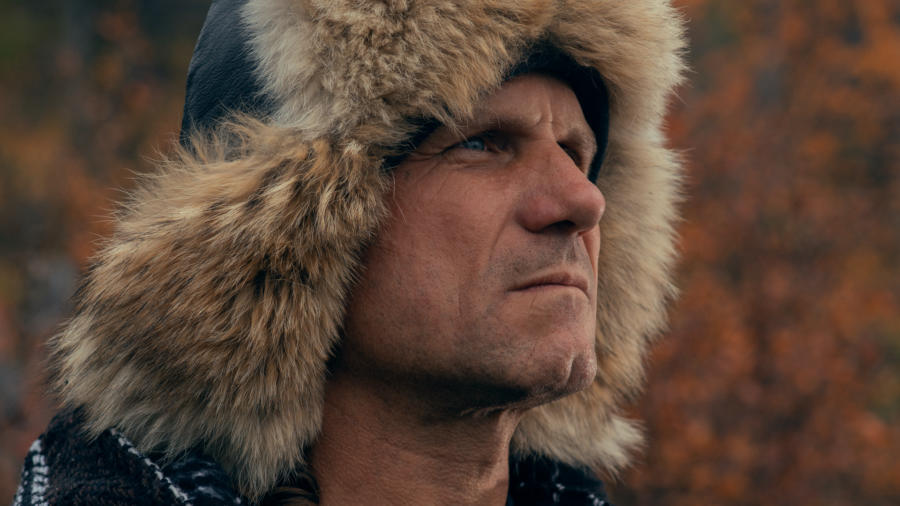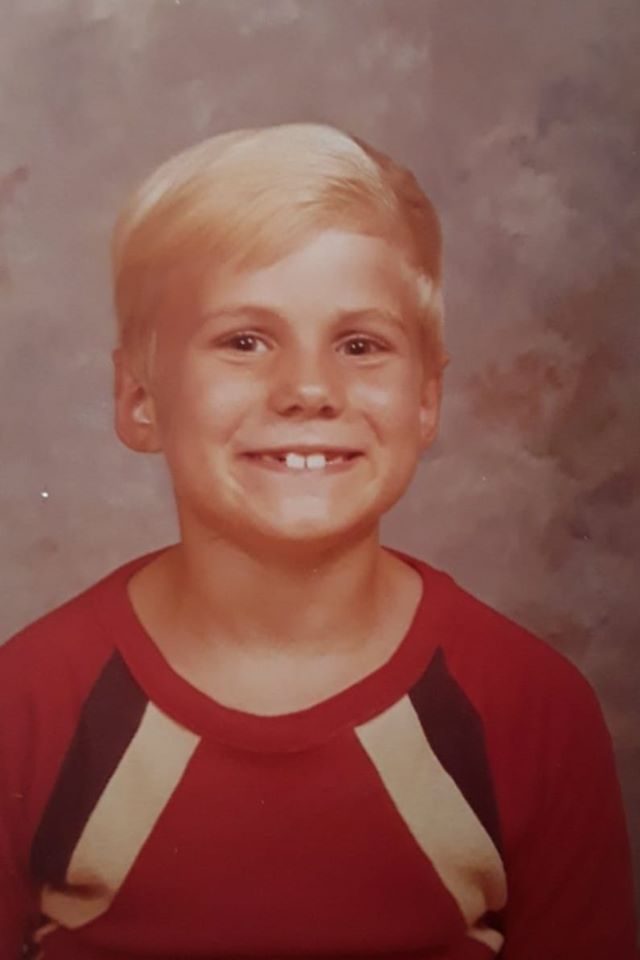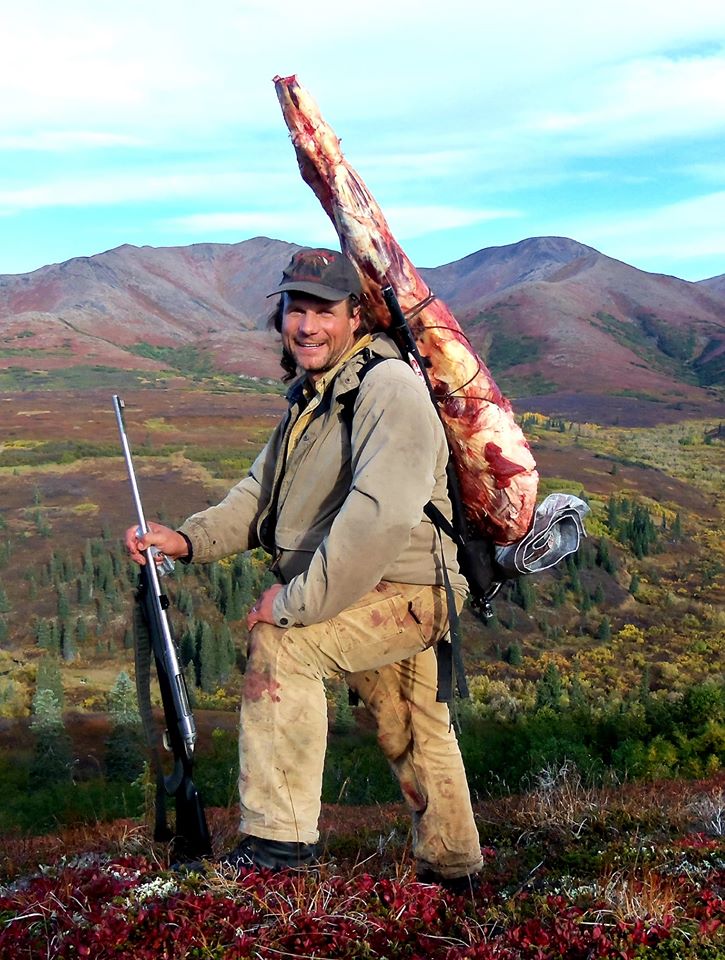
Roland Welker began mastering “extreme outdoor living” when he was just an 8-year-old boy in Shiloh.
Now four decades later, the 48-year-old Alaskan hunting guide and outfitter will emulate the old-time bushmen as he competes on television hit, ALONE.
ALONE: A Mission to Survive
ALONE is a reality survival series on the History channel, and this season’s 10 participants will face the most intense challenge in series history.
The mission is simple: survive 100 days with no shelter, no camera crews and no help to win $1 million. Over six seasons, no one has ever lasted this long in complete isolation in the wilderness.
In season seven, participants are dropped off in remote areas of the Arctic, and they self-document daily struggles to build shelter and fire, hunt for food and fend off fierce predators.
Participants each select 10 items of survival gear from a pre-approved list of items, and are also issued a kit of standard equipment and emergency/first aid supplies.
The participants are isolated from each other and all humans. They can leave the competition by “tapping out” and signaling for a rescue crew at any point.
Medical professionals conduct periodic health evals on participants, and may – at their discretion – disqualify and evacuate anyone they feel is unable to continue competing safely.
Because they are several miles apart from each other, the participants aren’t aware when the others “tap out” or must leave the competition due to injury or illness.

Humble Beginnings
Welker comes from humble beginnings and parents, Ernest L. and the late Mona M. Welker, as well as a family tree that wasn’t built on white-collar workers.
Instead the men were bound to their land, as they performed back-breaking work of loggers and miners in the surrounding coal- and timber-rich mountains.
His father co-owned J&E Welker Coal Co. with his older brother, the late Jim Welker, and they operated a pit-mine, which put food on the table and paid the bills – somewhat.
Growing up, Welker worked in the coal strippings and at his grandfather’s sawmill. There were no sick days back then, and no matter how big the splinter, work was done with no fuss.
He trapped coon and fox and hunted whitetail deer with his father and uncle. At the “ripe” age of eight, he took up the fur trade alongside his uncle Jim, who bought raw furs from local trappers.
Welker undoubtedly had a “reckless boyhood” in the hard-scrabble mountains of Shiloh, a stronghold of Appalachia and hillbilly culture.
He shunned sports and all other forms of high school restraint to master all the Keystone State had to offer, including hunting, fishing, trapping and bushcraft.
Following graduation from the Clearfield High School in 1989 and a stint in the military, Welker chased after a boyhood dream that was passed down from his father.
“I can remember our plans [of living in Alaska] still to this day – very vividly,” Welker said, “as we drove along through Shiloh in his 1964 Ford pick-up.”
So, in 1995 he outfitted his own Ford and ended up in the darkest part of Southwestern Bush Alaska and the village of Red Devil on the forgotten banks of the Kuskokwim River.
Hundreds of miles from Anchorage and only accessible by boat or plane, the small village of about 20 people became his new headquarters for adventure.
There were no phones or mobile devices, there was no television and there was no Internet. In fact, Welker often went months on end without any human contact.
He seamlessly took up the primitive lifestyle of the old bushmen from a century ago and fell into an existence of an all-season subsistence hunter and trapper.
Welker doesn’t punch a time clock at a regular 9-5 job and traps for a living. He sets traplines as far as 30 miles in one direction and several come into a hub where he builds cabins or wall tents.
He caught his first wolf with a snare set in 2000 and became more serious about trapping two years later when he went into the bush to stay for several months.
Almost every year, Welker extended his trapline, having a base camp or cabin and carrying a tent along for overnight stays that were sometimes 30 or so miles from camp.
The backbone of his trapping operation is Marten, though he also takes beavers, wolverines, wolves and lynx. If the new territory produces, he builds 12X16 cabins the following year.
“He is one of the biggest and best trappers in the entire state of Alaska,” said Rich Hughes of Clearfield, who’s documented Welker’s adventures in a book.
Welker became an assistant hunting guide in 2000 and a registered big game guide in 2006. “I am Registered Guide No. 1240,” he said, “so there were only 1,239 registered guides before me.”
He said Alaska is known for having one of the most rigorous licensure processes in the United States, and possibly even the world.
He’s paid to take outdoorsmen from the “lower 48” into the most remote parts of the wilderness to safely hunt “big game” like moose, grizzly bears, wolves and dall sheep.

And Welker has a very high success rate because he uses the first kill to bait in the next for his clients; one Georgia hunter even hit a hunting trifecta after shooting a 72-inch moose.
Welker knew it would take nine trips to haul out the animal with a 100-pound quarter on his back each time, and so he only made one trip.
When they went back the next day, it was evident a grizzly had buried the moose carcass in a makeshift brush pile. The bear was still perched atop the pile and it was shot dead next.
Welker skinned the bear for its hide and they made two more trips with salvaged moose meat that day. The following morning with a steady aim, his client shot a wolf from atop the original hill.
“There’s a lot of pressure on hunting guides,” Hughes said, “because your clients don’t care about what you got last week, and just want a [big-game] kill for themselves.
“I asked him once, ‘Welker, why don’t you have a scope on your gun?’ He says, ‘because by the time I take a shot, it’s close range.’ He’s killed hundreds of animals.”
Old-time Status
Welker really reached old-timer status in the winter of 2011 when he completed an overland heavy-equipment delivery to his wilderness placer gold claims.
He trekked the 100-mile winter trail between Red Devil and Taylor Mountain, a long-unused and possibly the lengthiest and most perilous of the trails the north has to offer.
“[I went] through timber, tundra, swamp and mountains,” he said, adding there were five major stream crossings, not to mention the ice-covered Holitna River.
With the heaviest machine weighing 11 tons, Welker crossed on 18 inches of ice. The entire endeavor took 67 days and 1,500 gallons of fuel.
“It was on a historical trail from the 1940’s and one of Alaska’s longest winter trails,” he said. “It felt good to blow that trail open; it was heavy, heavy duty to say the least.”
“Super Bowl of Survival”
Welker joined the season seven cast of ALONE to conquer its most intense survival challenge and to add yet another feather in his hat full of plumes.
“It’s [been] a life-long quest to push myself mentally and physically to the utmost,” he said, “… and ALONE is like the Super Bowl of wilderness survival …”
To help him stay alive on this journey, Welker chose a ferro rod, gill net, pot, trapping wire, ax, saw, multi-tool, belt knife and sleeping bag as well as a bow and arrows.
While being a successful hunting guide may possibly give him a competitive advantage, he also admitted there’s much more to wilderness survival than just “the hunt.”
He said shelter, fire, gathering and safety are also essentials, but that he did draw upon his experiences trapping during the subzero, dark winters of interior Alaska when he made his 10-item list.
The survival series will pit Welker against:
Mark D’ambrosio, a 33-year-old sniper and survival skills instructor from Vancouver, Wash. He grew up in Orange Park, Fla., where he spent his free time in the outdoors hunting and fishing.
At age 22, he joined the U.S. Marine Corps spending close to 10 years conducting special operations for the reconnaissance and scout sniper communities.
He spent four years in Southeast Asia and four in Bridgeport, Calif., where he instructed mountain cold-weather operations and survival for snipers and military members around the world.
After his discharge from the Marine Corps in 2017, D’ambrosio started International Mountain Survival. His business concentrates on sniper, survival, tracking and rappel courses.
D’ambrosio instructs snipers around the world from both military and law-enforcement backgrounds.
He’s also the lead shooting/outdoor instructor for Branded Rock Canyon, a world-class hunting and shooting facility located near Grand Junction, Colo.
Correy Hawk, a 30-year-old traditional bowyer from Plattsmouth, Neb. He was born in Southeast Nebraska where he was raised to hunt, fish and forage for wild foods and navigate in the wilderness.
He comes from a long line of accomplished bow hunters. His father had a bow and arrows in his hand as soon as he was old enough to understand their utility.
His early adult years led him away from archery to the Marine Corps, where he served two combat tours in Afghanistan as a vehicle recovery operator with the First Marine Regiment.
After returning home to Nebraska, he became fascinated with traditional archery. He now owns Organic Archery, where he works as a bowyer specializing in primitive longbows and wooden arrows.
Shawn Helton, a 43-year-old tool maker from Henry, Tenn. As a kid, he was always taking things apart and rebuilding them. His maker-mindset has transferred to his love of the wilderness.
Learning to live off the land in the lakes area of West Tennessee, Helton is always pushing the limits of his bushcraft and engineering skills.
He invented a “Settlers Wrench” tool to help create tight bindings in his builds without the use of cordage.
Helton’s web-based survival education and trading video series, Shawn with the Wild, has educated over 20,000 followers.
Kielyn Marrone, a 33-year-old winter wilderness expedition operator from Ontario, Canada. She is the co-owner of Lure of the North with her husband and best friend, Dave.
Together, they live off the grid at a remote wilderness property in northern Ontario, Canada that is only accessible by boat or snowmobile.
For a living, she takes people into the most remote parts of northern Ontario and Quebec, snowshoeing through the boreal forest for weeks on end while using traditional techniques and gear.
Joe Nicholas, a 31-year-old biologist from Redding, Calif. Spending childhood summers on his grandparents’ farm catching bugs and starting fires fostered a fascination with wildland, wildlife and subsistence living early in his life.
After earning a degree in geography and wildland soils from Humboldt State University, Nicholas began pursuing a career in land management as a biologist for the U.S. National Park Service.
Amós Rodriguez, a 40-year-old primitive skills instructor from Indianapolis, Ind. Hiking and hunting the hills and volcanoes of Central America gave Rodriguez a foundation for his primitive skills life practice.
Growing up in the El Salvador Civil War increased his urban and wilderness survival and awareness skills. During the post-war period, he assisted rural communities devastated by the violence.
In the fall of 2000, he received a scholarship to finish his higher education in the United States. This education, as well his travel experiences, allowed him to move deeper into his connection to place, ancestry and self.
Rodriguez’s spiritual journeys, such as the Sundance Ceremony of the Oglala Lakota Sioux, have reinforced the pillars in which his spiritual life and practice are based.
Callie Russell, a 31-year-old ancestral living skills instructor from Flathead Valley, Mont. She’s a scavenger-gatherer who lives nomadically following the seasons and wild food.
While working as a guide in wilderness therapy, Russell realized that she was the most joyous and peaceful when immersed in nature.
She decided to walk away from modern comforts and committed her life to learning skills that would allow her to stay in the wilderness for longer and longer periods of time.
Since 2010, she’s been living outside under trees, tarps, canvas and caves. Several of those years were spent living nomadically with a herd of pack goats that she raised, which allowed her to be sustained directly from the land.
Living outside has allowed her to become proficient in many ancestral skills. Her focus has been in backcountry animal processing, hide tanning, felting, basket weaving and gathering plants for medicine, food and art.
In the fall, Russell skins deer and elk at a wild game processor in order to harvest hides, which she then tans and sells through her business, Montannery.
When she is not wandering in the mountains, her time is filled with her many other jobs. She tracks mountain lions every winter for a conservation project and works with a hunting guide packing goats in and out of the backcountry.
Keith Syers, a 45-year-old from Curlew, Ky., where he homesteads 40 acres on the banks of the mighty Ohio River. He lives in a tiny salvage house on a hybrid grid system that was built by hand.
Together, he and his wife raise stock, as well as an extensive garden, all while hunting, foraging and fishing. The land and waterways supply Syers and his family with the majority of their sustenance from season to season.
He’s also a member of the American Mountain Men, an organization based on using gear from the early to mid-1800’s that requires it’s members to survive off the land, alone and under any circumstances.
An accomplished primitive hunter, Syers has taken game with anything from his own handcrafted atlatl to flintlock. He has been a trapper since a very young age and has honed his tracking skills over 30 years in the field.
Joel Van Der Loon, a 34-year-old primitive skills school owner from Sisters, Ore. His experience in bushcraft began from childhood growing up in South Africa and living off-grid in Tanzania, East Africa.
Over the last 12 years, he has traversed through 40 countries and crossed oceans as an engineer on various seafaring vessels, exploring some of the world’s most remote locations.
He has hiked, fished, hunted and explored just about every type of ecosystem, and is trained in desert, alpine, jungle and temperate survival methods.
Van Der Loon owns and runs a wilderness survival school and has taught families, celebrities, children and the military.
He has learned primitive skills from the Hadzabe hunter-gatherers, Maasai herdsman and Rama Indians in Nicaragua.

“The lineup is strong …,” Welker said, “… The competition will likely be tight, but I began extreme outdoors living when I was 8 years old. My 40 years of experience is my edge.”
Hughes is equally as confident that the survivalist skills of the “Last Bushman on the Mid-Kuskokwim” can’t be matched by the other nine participants.
“Isolation won’t be a problem because this is a guy who dropped out of society … he doesn’t need electricity; he doesn’t need a cell phone,” Hughes said.
“Welker goes [trapping] in 40- or 45-below and 50 miles from another person … he’ll leave in the fall and say ‘see ya in the spring.’”
“He’s eaten oddball things from animal carcasses to seagull eggs, etc., … and I just laugh at that wolf in the show’s previews. Welker isn’t scared of no wolf.”
He said if Welker has a run in with a bear or wolf during the competition, he’ll know what he’s having for dinner tomorrow night. “He’s pretty much lived this show.”
This season premieres at 10 p.m. June 11 on the History channel, and Welker is hoping to dedicate a win to his mother, the late Mona Welker, who passed away June, 30, 2019.
“My whole life has been geared towards this chance,” he said. “If I were to win, I’d like to represent our ancestors with my lifestyle as those men wrestled this great civilization out of raw wilderness.
“Also, more importantly, I’d like to commemorate my mother … who passed as I was prepping and training for this journey. I want to win it for her … ‘Lord Jesus give me strength, I pray.’”
For more information, visit www.rolandwelker.com or follow Welker on Instagram @lastbushman, on Twitter @RolandWelker and Roland Welker on YouTube.


